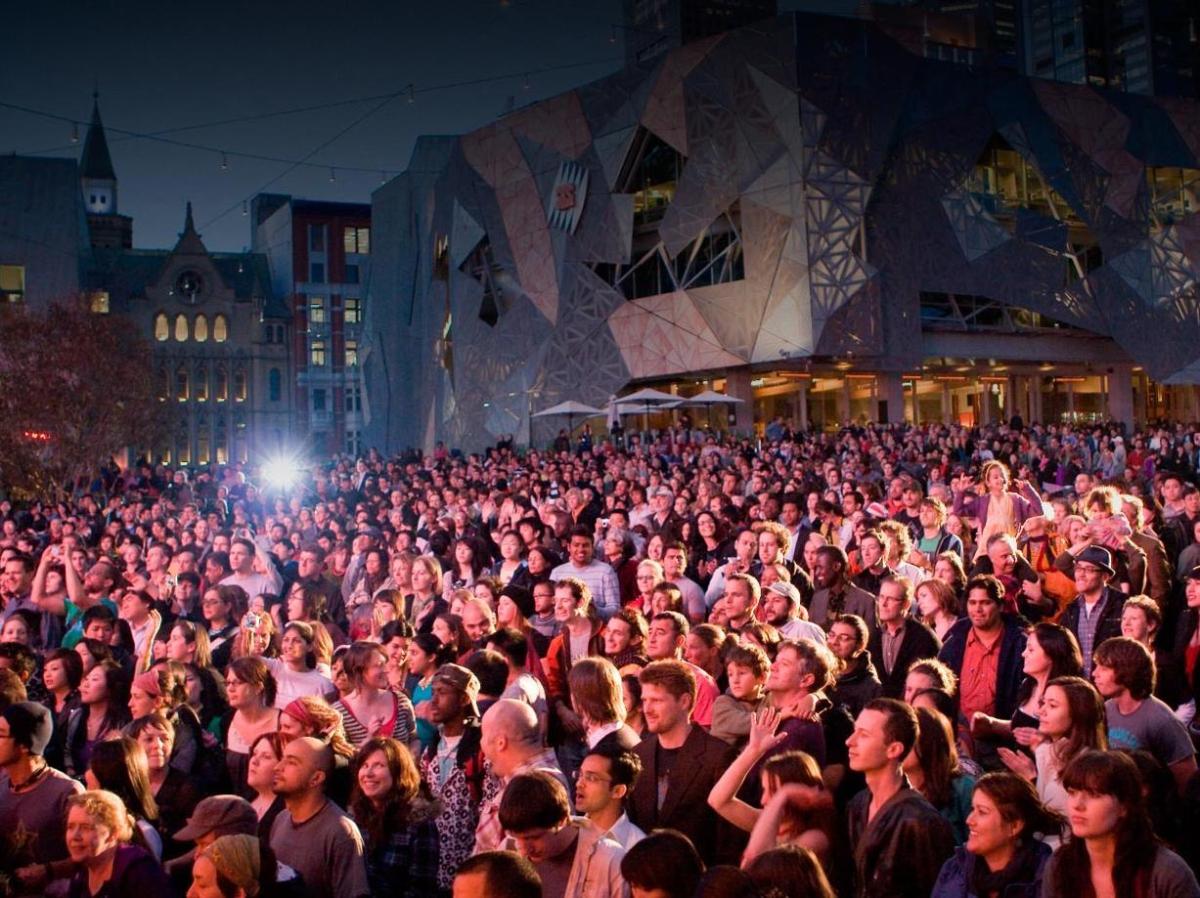Image: Melbourne Festival
Tourism is the Holy Grail for events, providing an effectively infinite pool of potential consumers bringing new income into a region.
In capitals with crowded calendars of sport, arts and cultural events, tourism is the key way of expanding the pie instead of just slicing it differently. In regional centres, the promise of an influx of tourists makes major events viable and draws income out of its metropolitan concentration.
State governments invest heavily in promotion, not only through general campaigns but also through cherry-picking major events for additional promotion from the public purse.
Last week the Victorian Government announced a new initiative to merge the Victorian Major Events Company (VMEC) and Tourism Victoria, creating a new Visit Victoria tourism and events company.
Minister for Tourism and Major Events John Eren touted the new entity as a ‘game changer’.
From the point of view of the arts and entertainment sector, the game certainly needs changing.Arts missing out
In 2015 Victoria’s Major Events Company is promoting 24 events. Just three of them are arts or entertainment: White Night, the Logie Awards and ACMI’s Melbourne Winter Masterpieces David Bowie exhibition.
Strikingly absent are Masterpieces from the Hermitage, which is the National Gallery of Victoria (NGV)’s Winter Masterpieces exhibition, the Melbourne Festival, the Comedy Festival and Melbourne Writers Festival – not to mention regional events such as the Ballarat International Foto Biennale.
By contrast three quarters of the promoted events are sport from the obvious AFL Grand Final and Spring Racing Carnival to the lesser attractions of Ironman competition, sailing, surfing, even snooker.
These are striking figures, especially as a recent study showed international tourists are twice as likely to visit the National Gallery of Victoria as the MCG.
In its new structure, Victoria could take a leaf out of NSW’s book. Destination NSW promotes four times as many events with a much better balance between sectors.
The line from Victoria’s Ministry for Tourism and Major Events is that the VMEC does not approach the analysis of major events according to sector ‘quotas’ but assesses them on economic merit and where they can sit within the calendar.
A spokesperson for Minister for Tourism and Major Events, John Eren said the Government was committed to securing the biggest and best lucrative events that deliver economic outcomes for Victoria.
‘Our mixture of events varies year to year, depending on the opportunities available and the potential economic benefits they deliver.’
He said the 2016 supported events would include Kinky Boots, White Night Melbourne and the Melbourne Ring Cycle, with more announcements to come. Most arts events will continue to be funded through Creative Victoria but there is an opportunity for some to be promoted through VMEC if the size and scope of the event delivers the appropriate economic benefit to the state.
The sport plus art package
Promoting events is not a zero sum game. Far from culture’s gain equating to sport’s loss, the combined promotion of cultural and sporting events has the potential to grow tourism for all parts of the Victorian economy.
In the past, the mythic divide between art and sport has contributed to a promotional culture that focused on individual events or separate sectors rather than seeing the possibility for attracting tourists through packaging different kind of events.
Melbourne Festival CEO Katie Macleish welcomes the Visit Victoria initiative as an opportunity to create a more collaborative approach to drawing tourists to the State.
‘We think it will make a difference because it will enable us to partner more effectively. Collective marketing is much more effective than marketing individual events,’ she told ArtsHub
Macleish sees the Melbourne Festival as the ‘cultural meat in the sporting sandwich’, positioned between the footy final at the beginning of October and the Spring Racing Carnival in early November. She said many tourists came for the Festival and stayed for the Racing Carnival.
An indication of the importance of tourism to the Melbourne Festival is the fact that two of the Festival’s major supporters are Chinese corporations – China Southern Airlines and Union Pay.
China and New Zealand are the most important international markets for inbound tourism and Macleish said the packaging of culture and sport is essential to that market. ‘Chinese tourists want to attend an arts event and a sports event, to go shopping and maybe to visit a winery. It’s the total package that this city has that really sets us apart, the passion and the strength for both arts and sport.
But interstate and intrastate tourism are also big potential earners. There is a steady flow of tourists between Sydney and Melbourne that provides an important source of income for hotels and restaurants as well as events providers. Regional visitors are able to make more regular visits and can be drawn by multiple events for short stays.
The National Gallery of Victoria too sees Visit Victoria as a valuable initiative. ‘The new body will benefit the wider community as a whole and create better access to major cultural events, which will further enrich the cultural fabric of the state,’ said Deputy Director Andrew Clark. ‘We strongly support a body that will bring world-class events to Melbourne and create widespread growth for our tourism sector.’
Both the Festival and the Gallery strategically declined to comment on past emphasis by the Major Events Company, instead looking to the future.
‘We are delighted to work with Visit Victoria to strengthen Victoria’s commitment to cultural tourism,’ said Clark.





